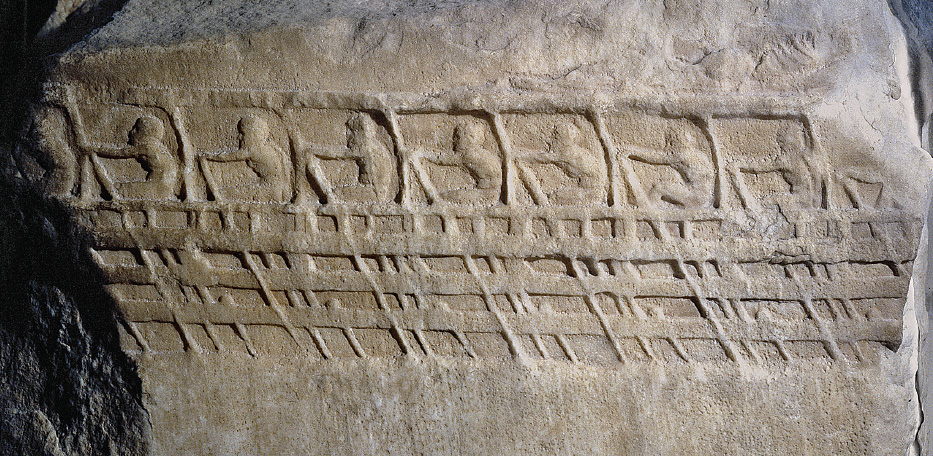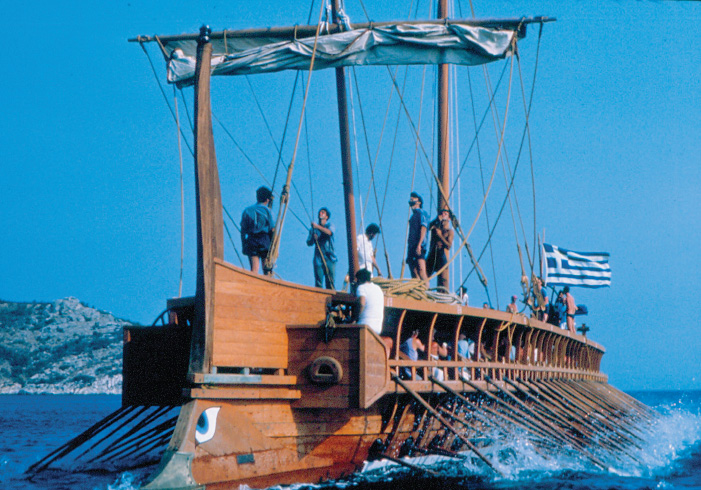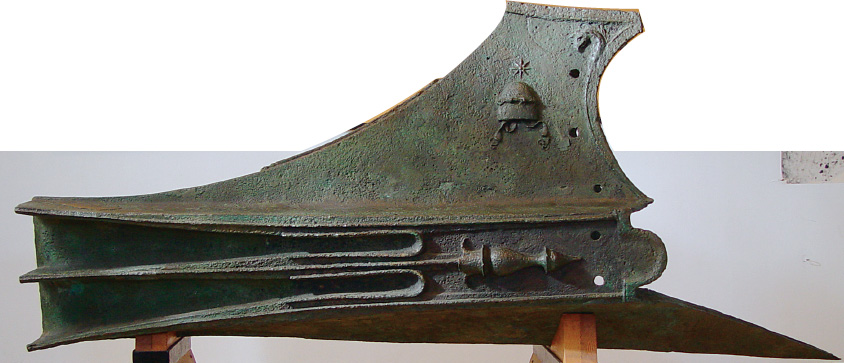A History of Western Society: Printed Page 74
LIVING IN THE PAST
Triremes and Their Crews
Men pulling long oars propelled Greek warships in battle. These ancient mariners were generally free men who earned good wages, although in times of intense warfare cities also used slaves because there were not enough free men available. An experienced rower was valuable because he had learned how to row in rhythm with many other men, and some rowers became professionals who hired themselves out to any military leader. By the sixth century B.C.E. the dominant form of warship in the Mediterranean was the trireme, with three rows of oars on each side and one man per oar. Triremes also had two sails for extra propulsion when the wind was favorable, and large steering oars at the back. The trireme usually carried 186 rowers, 14 soldiers for battles, a steersman who also served as navigator, and a captain.


The hull, or frame, for the trireme was long and narrow like a stiletto blade, and the ship was built for speed, not comfort. A bronze battering ram capped the bow, or front of the ship. In battle the crews rowed as hard as possible to ram enemy ships. After smashing the enemy’s hull, the same rowers or soldiers who were on board the trireme swept over the side to capture the ship. Rowers often had to pull their oars hurriedly in reverse to free themselves from sinking enemy triremes.
Life aboard a trireme was cramped and uncomfortable. The crew sat about eight feet above the waves, and storms proved a constant danger. One captain described a particularly hard night at sea: “It was stormy, the place offered no harbor, and it was impossible to go ashore and get a meal…. So we were forced to ride at anchor all night long in the open sea without food and sleep…. It was our lot to have by night rain and thunder and a violent wind.”* Surviving a naval battle held its own dangers, for a trireme had no space for lifeboats. One sailor described his escape from a sinking ship: “One man said that they had been saved by clinging to a barrel. Others who were drowning told him, if he got away safely, to report that the admirals were doing nothing to rescue men who had fought most gallantly for their country.”† Despite such discomforts and dangers, these oared ships and their men ruled the Mediterranean throughout classical antiquity. Greek and later Roman naval architects designed them expertly, and their crews routinely manned them with skill and courage.

*Pseudo-Demosthenes 50.22–23.
†Xenophon, Hellenika 1.7.11.
Source: J. S. Morrison, Greek and Roman Oared Warships 399–30 B.C.E. (Oxbow Books, 1996).
QUESTIONS FOR ANALYSIS
Question
In the relief from the Acropolis, how does the artist capture the physical effort of the oarsmen?
Question
Based on the relief and the photo of the modern reconstruction, why do you think rowing in time was so important?
Question
Triremes were well suited for war, but why would they not have worked well for trade?